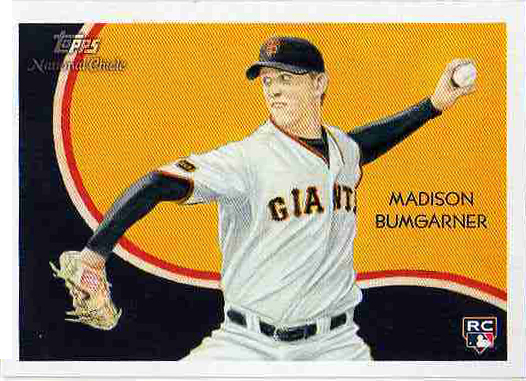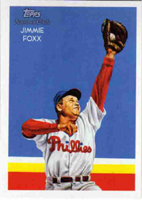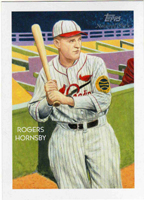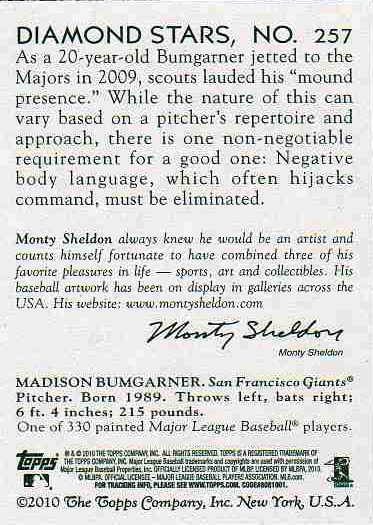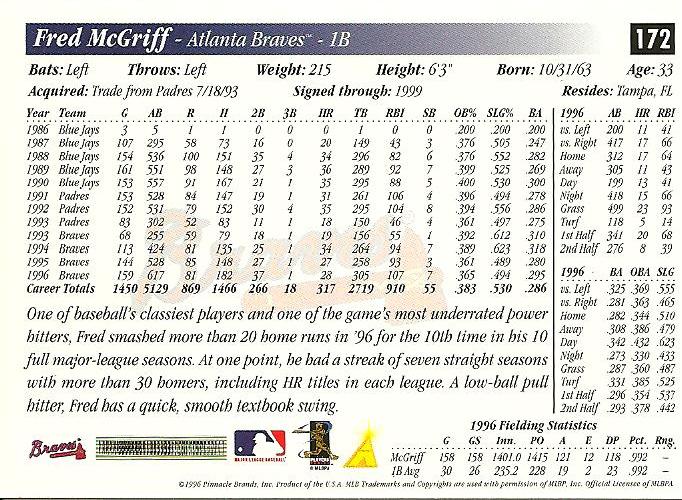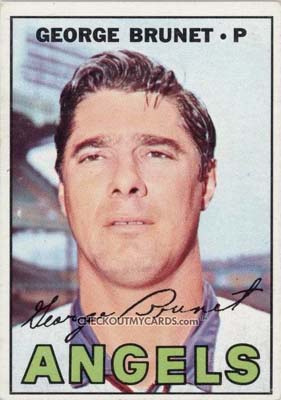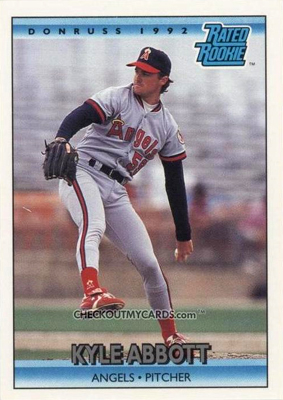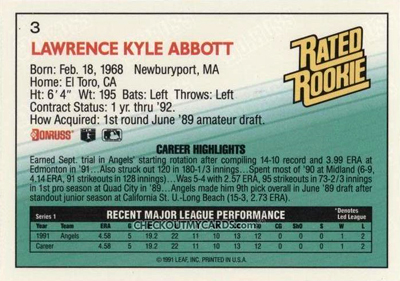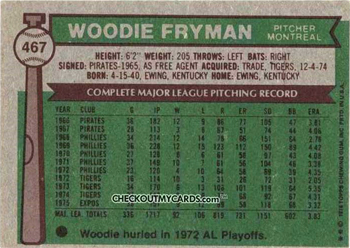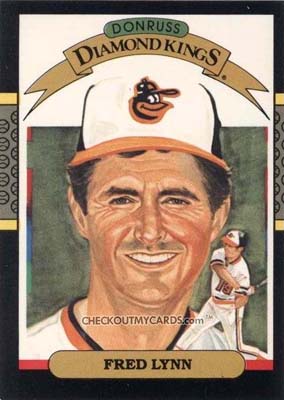
Oh, so very much to say about this card and the 1987 Donruss set. Let's talk about the set first and the specific card I chose second.
For all three major baseball card manufacturers active at the time (Topps, Fleer, and Donruss) 1987 was a big year due to the many excellent rookies that came out of the set. Among many others, the 1987 Donruss set has the first regular-issue Donruss cards for Barry Bonds, Mark McGwire, Rafael Palmeiro, Greg Maddux, Bo Jackson, Kevin Brown, Barry Larkin, Will Clark, David Cone, Wally Joyner, Bobby Bonilla, Ruben Sierra, Jamie Moyer, Randy Myers, Terry Steinbach, Kevin Mitchell, Mike Greenwell, and many others. That's quite a few HOF-caliber players, All-Stars, Rookies of the Year, Cy Young winners, etc.
The set itself was pretty good, fairly on par with the Donruss sets of 1984 and 1985. Among the negatives, however, were:
- As you can see from the example card above, the design lent itself to "showing off" miscut cards. The little baseball designs on either side made it quite obvious when a card had poor left-to-right centering.
- The black border all around, again, showed off any dings or chips
- Most of the photos were either headshots or closely-cropped action shots. There weren't very many true action shots, which Topps still did the best with at this time.
Many people wouldn't say the first two bullet points above were marks against the set. In fact, it meant that cards were easier to inspect and made obtaining high-quality examples more of a challenge. This (plus the fact that the set was produced in smaller quantities) has always been reflected in the pricing, as 1987 Donruss cards have always been more valuable than Topps cards of the same year and player.
I'll talk more about the specific card above after a brief interlude to discuss stats.
As has been well-documented, 1987 was a strange year in baseball as home runs flew out at a record pace. Many people have maintained that the baseball was different this year but MLB denied it. Something was definitely going on, though.
Check out the table below showing seasons with the most players with 20+ homers but no more than 60 RBI.
| Rk |
Year |
#Matching |
|
| 1 |
2009 |
7 |
Jay Bruce / Chris Davis / Jonny Gomes / Garrett Jones / Mike Napoli / Carlos Quentin / Alfonso Soriano |
| 2 |
1987 |
7 |
Steve Balboni / Barry Bonds / Ellis Burks / Nick Esasky / Bo Jackson / Fred Lynn / Fred McGriff |
| 3 |
2008 |
6 |
Jay Bruce / Eric Hinske / Mike Napoli / Kelly Shoppach / Marcus Thames / Ty Wigginton |
| 4 |
2006 |
5 |
Chris Duncan / Morgan Ensberg / Jonny Gomes / David Ross / Marcus Thames |
| 5 |
2005 |
4 |
Rod Barajas / Casey Blake / Jonny Gomes / Reggie Sanders |
| 6 |
2003 |
4 |
Adam Dunn / Morgan Ensberg / Alex Gonzalez / Matt Stairs |
| 7 |
2000 |
4 |
Darrin Fletcher / Charles Johnson / David Justice / Daryle Ward |
| 8 |
1999 |
4 |
Russ Davis / Glenallen Hill / Todd Hundley / Ruben Rivera |
| 9 |
1979 |
4 |
Dwight Evans / Dale Murphy / Jim Spencer / Champ Summers |
| 10 |
1973 |
4 |
Oscar Gamble / Dave Kingman / Rick Monday / Jim Wynn |
| 11 |
1966 |
4 |
Jimmie Hall / Mickey Mantle / Dick McAuliffe / Art Shamsky |
| 12 |
1961 |
4 |
Earl Averill / Steve Bilko / Johnny Blanchard / Wally Post |
The Steroid Era, when everybody and his grandma has been hitting homers, is well-represented. But then there's 1987 stuck right in at the top. There's really no good explanation for this other than the theory about the baseballs changing for that one season. In 1988, MLB changed the balk rule so as to focus attention away from HRs going back to normal and onto something completely opposite.
Take a quick look at the back of the card below and read the first sentence. Don't you just love grammatical errors on baseball cards? Of course, they should have just used the correct adverb form and said there's just one way Lynn plays baseball: hardly. After 1985 the guy never appeared in as many as 120 games per season.
The Diamond King was a long-standing tradition for Donruss. They first started it in their second set in 1982. The overall style remained very similar for many year, which is nice. Diamond Kings continued into the 1990s and 2000s although the style did eventually change a little. They were always portraits of players, which I think was a very nice addition to the sets. Many of the issues (especially the 1980s ones) included both a portrait and a mini action shot, such as a mid-swing Lynn as seen above.
Some of the Diamond Kings left a little to be desired. Sometimes the portraits were not very good and sometimes the choices were just odd. It was a little like the All-Star game in that each selection process required one player from every team. So sometimes bad teams with no really good players still got a guy represented in the Diamond King set. I'd like to write a separate article about that and I'll post it here sometime later.
Lynn was a pretty good choice, however, for the 1987 set based on his 1986 performance. The 1986 Orioles had been a last-place team and the only really good offensive players were Eddie Murray, Cal Ripken, Larry Sheets, and Lynn, who led the team in OPS+ at 137. He tacked on a few more decent years before retiring in 1990. I'm glad he got this Diamond King honor.


